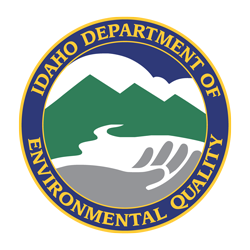| Data | Details |
|---|---|
| Hydrologic Unit Codes | 17060101 (Hells Canyon) 17050103 (Middle Snake-Succor Creek) 17050115 (Middle Snake-Payette River) 17050201 (Brownlee Reservoir) |
| Size | 2,500 square miles (1,600,000 acres) |
|
Water Bodies with EPA-Approved TMDLs (Category 4a)a |
Hells Canyon: Divide Creek and tributaries, Snake River, Wolf Creek and tributaries Middle Snake-Succor Creek: Birch Creek, Castle Creek, Hardtrigger Creek, Jump Creek, McBride Creek, Pickett Creek, Sage Creek, Sinker Creek, Snake River, South Fork Castle Creek and tributaries, Upper and Lower Succor Creeks, Vinson Wash Middle Snake-Payette River: Snake River Brownlee Reservoir: Bear Creek, Deer Creek, Dennett Creek, Hog Creek, Jenkins Creek watershed, Lick Creek, Scott Creek, Snake River-Hells Canyon Reservoir, Snake River-Oxbow Reservoir, Upper and Lower Brownlee Reservoir, Warm Springs Creek, Wildhorse River |
| Beneficial Uses Affectedb | Cold water aquatic life, primary contact recreation, domestic water supply, salmonid spawning |
| Major Land Uses | Nez Perce tribal use, agriculture, grazing, mining, recreation, urban |
| Dates Approved by EPA | March 2004
EPA Approval Letter September 2004 EPA Approval Letter |
Subbasin Characteristics
The Snake River watershed includes areas of Idaho, Nevada, Oregon, Utah, Washington, and Wyoming. The Snake River is the 10th longest river system in the United States, extending over 1,000 miles from its headwaters in Yellowstone National Park, Wyoming, to its confluence with the Columbia River near Pasco, Washington. Over its length, the river falls nearly 7,000 feet in elevation. It passes through some of the richest farmland and the deepest canyons in North America. The Snake River is the major tributary to the Columbia River system. It drains about 87 percent of the State of Idaho (roughly 73,000 square miles); approximately 17 percent of the State of Oregon (about 16,900 square miles); and over 18 percent of the State of Washington (approximately 19,600 square miles). The Snake River flows nearly 760 miles through southern and southwestern Idaho, with about 270 miles of this segment acting as the border between Oregon and Idaho. Near the town of Lewiston, the Snake River leaves Idaho (having left Oregon upstream near China Garden Creek), traveling the remainder of its length westward across Washington to its confluence with the Columbia River.
2004 Subbasin Assessment and TMDL
The scope of this TMDL extends from where the Snake River intersects the Oregon/Idaho border near Adrian, Oregon, to immediately upstream of the inflow of the Salmon River. This includes the Hells Canyon Complex reservoirs: Brownlee, Oxbow, and Hells Canyon. The overall reach has been divided into five segments based on similar hydrology, pollutant delivery, and processing mechanisms and operational, management, and implementation strategies. The five segments are as follows:
Upstream Snake River (river mile 409 to 335, 74 miles total)
Brownlee Reservoir (river mile 335 to 285, 50 miles total)
Oxbow Reservoir (river mile 285 to 272.5, 12.5 miles total)
Hells Canyon Reservoir (river mile 272.5 to 247, 25.5 miles total)
Downstream Snake River (river mile 247 to 188, 59 miles total)
Within these segments, all designated beneficial uses and the following listed pollutants have been addressed by the TMDL: bacteria, nutrients, nuisance algae, dissolved oxygen, pesticides, pH, sediment, temperature, and total dissolved gas. The document recommends that the segment addressed by this TMDL be delisted for bacteria and pH. The mercury TMDL has been postponed to 2006 due to a lack of water column data.
Recognizing the complexity of the Snake River-Hells Canyon system, the TMDL adopts a phased approach to implementation that will identify interim milestones to determine the effectiveness of management measures or other action controls being implemented. It also includes a process for reviewing and revising management approaches.
The TMDL document includes two separate, state-specific implementation plans. Together, these documents represent the water quality management plan for the Snake River-Hells Canyon TMDL.
2004 TMDL: Stream and Pollutants for Which TMDLs Were Developed
| Data | Details |
|---|---|
| Snake River (river mile 401 – 188) | Nutrients/dissolved oxygen, pesticides, sediment, temperature, total dissolved gas |
Subbasin Document(s)
This accordion will not appear on the screen

